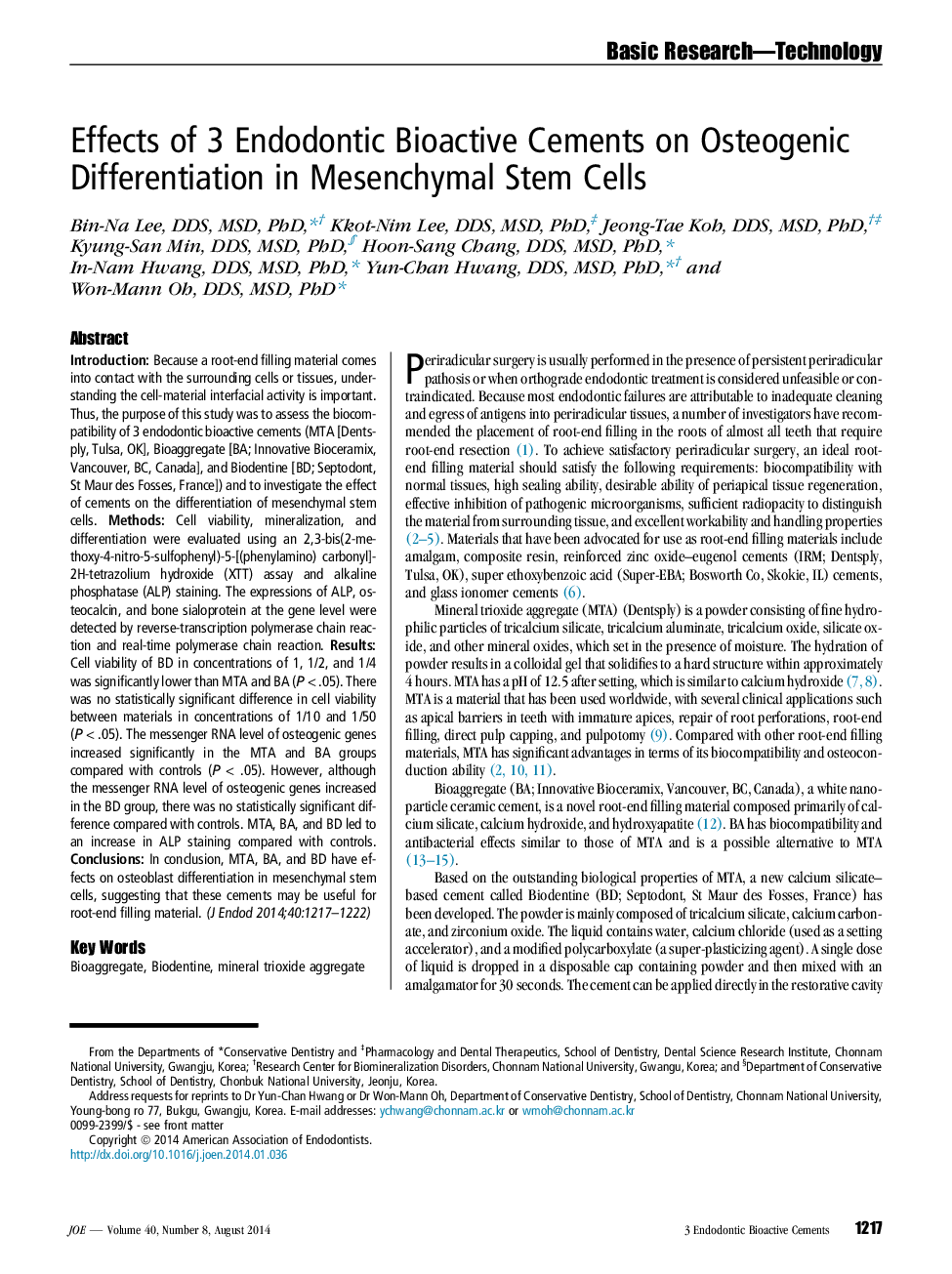| Article ID | Journal | Published Year | Pages | File Type |
|---|---|---|---|---|
| 3146753 | Journal of Endodontics | 2014 | 6 Pages |
IntroductionBecause a root-end filling material comes into contact with the surrounding cells or tissues, understanding the cell-material interfacial activity is important. Thus, the purpose of this study was to assess the biocompatibility of 3 endodontic bioactive cements (MTA [Dentsply, Tulsa, OK], Bioaggregate [BA; Innovative Bioceramix, Vancouver, BC, Canada], and Biodentine [BD; Septodont, St Maur des Fosses, France]) and to investigate the effect of cements on the differentiation of mesenchymal stem cells.MethodsCell viability, mineralization, and differentiation were evaluated using an 2,3-bis(2-methoxy-4-nitro-5-sulfophenyl)-5-[(phenylamino) carbonyl]-2H-tetrazolium hydroxide (XTT) assay and alkaline phosphatase (ALP) staining. The expressions of ALP, osteocalcin, and bone sialoprotein at the gene level were detected by reverse-transcription polymerase chain reaction and real-time polymerase chain reaction.ResultsCell viability of BD in concentrations of 1, 1/2, and 1/4 was significantly lower than MTA and BA (P < .05). There was no statistically significant difference in cell viability between materials in concentrations of 1/10 and 1/50 (P < .05). The messenger RNA level of osteogenic genes increased significantly in the MTA and BA groups compared with controls (P < .05). However, although the messenger RNA level of osteogenic genes increased in the BD group, there was no statistically significant difference compared with controls. MTA, BA, and BD led to an increase in ALP staining compared with controls.ConclusionsIn conclusion, MTA, BA, and BD have effects on osteoblast differentiation in mesenchymal stem cells, suggesting that these cements may be useful for root-end filling material.
